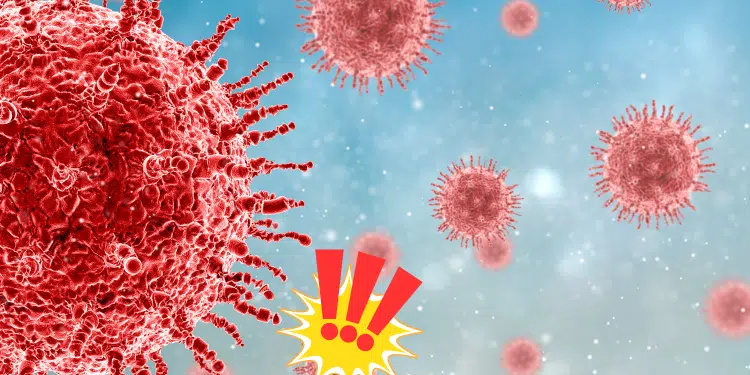Cancer remains one of the most challenging diseases of our time, claiming millions of lives each year despite advancements in treatment.
However, a groundbreaking discovery from researchers at the UC Davis Comprehensive Cancer Center is offering a ray of hope.
Scientists have identified a “kill switch” within the body that has the potential to destroy any type of cancer cell: the CD95 receptor, also known as Fas.
This revolutionary finding, recently published in the journal Cell Death & Differentiation, could transform cancer treatment by targeting a previously overlooked mechanism for inducing programmed cell death, or apoptosis.
What Is the “Kill Switch”?
The CD95 receptor, nicknamed the “death receptor,” plays a crucial role in regulating apoptosis. This natural process helps the body maintain healthy cellular balance by eliminating damaged or unnecessary cells.
- How It Works: CD95 receptors sit on the surface of cells. When activated, they trigger a chain reaction of molecular events that leads to the self-destruction of the cell.
- The Discovery: UC Davis associate professor Jogender Tushir-Singh and his team have identified a specific epitope on the Fas receptor that can reliably initiate this process in cancer cells. This epitope acts as a key, unlocking the cell’s ability to self-destruct.
Why Is This Discovery Significant?
1. Overcoming Therapeutic Resistance
One of the biggest challenges in cancer treatment is therapeutic resistance, where cancer cells adapt to evade or withstand conventional treatments like chemotherapy and radiotherapy.
- The Problem: Current immunotherapies, such as CAR T-cell therapy, have shown promise but are often less effective against solid tumors.
- The Solution: Activating the Fas receptor offers a way to bypass resistance by inducing cell death directly, making it nearly impossible for cancer cells to evade treatment.
2. Enhancing Immunotherapy
By integrating Fas activation into existing immunotherapy strategies, researchers believe they can significantly improve treatment outcomes. This approach could make therapies more targeted, and effective, and potentially reduce side effects by focusing on cancer cells while sparing healthy ones.
The Road to Clinical Applications
While this discovery is a significant milestone, there’s still much work to be done before it can be translated into clinical treatments:
- Preclinical Testing: Researchers need to conduct extensive studies to determine the best ways to activate the Fas receptor in various types of cancer cells.
- Safety Assessments: Ensuring that therapies targeting the Fas receptor don’t harm healthy tissues is a critical step before human trials.
- Collaboration: Developing therapies based on this discovery will require teamwork between scientists, clinicians, and pharmaceutical companies.
Despite these challenges, the potential benefits are enormous. If successful, Fas-targeted therapies could offer new hope for patients with cancers that have resisted other treatments.
Implications for the Future of Cancer Treatment
The discovery of the Fas receptor’s role as a “kill switch” opens the door to a new era in oncology. Here’s what it could mean for the future:
- Personalized Medicine: Treatments could be tailored to the specific genetic and molecular profile of each patient’s cancer.
- Broad Applicability: Unlike some therapies that are limited to specific cancer types, Fas-targeted approaches could work across a wide range of cancers.
- Improved Survival Rates: By overcoming therapeutic resistance, this discovery could lead to better outcomes for patients who currently have few options.
Hope on the Horizon
Cancer remains a formidable adversary, but discoveries like the Fas receptor’s potential to act as a universal “kill switch” bring renewed hope to millions of patients and their families.
With further research, collaboration, and innovation, we are moving closer to a future where cancer can be effectively controlled – or even eradicated.
As scientists continue to explore this breakthrough, the vision of a world where cancer is no longer a life-threatening disease becomes ever more attainable.
Share this article to spread awareness about this promising discovery and inspire hope for a brighter future in cancer treatment.

